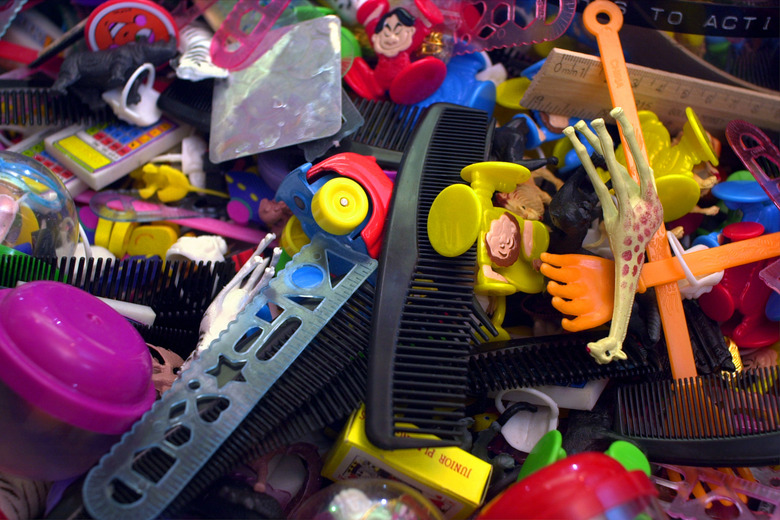How To Make An Animal Cell Model Using Recyclable Material
Creating a model animal cell can be an exciting and informative project. Using recycled materials is one way to turn trash in to a great project while encouraging students to use their imaginations. Using unusual materials to represent the parts of an animal cell adds a unique perspective to each project.
1. Start With Animal Cell 2D Study Materials
Study a science text book or similar reference materials to learn about cell structure and function. If this is a school project, list every part that must be included as you study. Elementary teachers will often not require as many cell parts to be included as middle or high school teachers.
2. Form the Basic Shape of Your Cell Model Project
Create the basic shape of the cell using cardboard or another type of sturdy material. Cardboard is an excellent choice for this because it maintains its shape and can support the other materials as they are added. Covering the cardboard with plastic is one way of representing the cell membrane or the cytoplasm. Plastic bags can also be scrunched up and glued along the edges of the cardboard to represent the cell membrane.
TL;DR (Too Long; Didn't Read)
At some point, you'll probably study plant cells too. One of the key differences between an animal cell model and a plant cell model is the presence of a rigid cell wall that surrounds the membrane of a plant cell. This structure is absent in an animal cell.
3. Anchor the Nucleus of the Cell
Choose an item that will represent the nucleus of the cell. It should be round, like a bowl or cup, and should be the largest organelle (or cell part) in your model. Secure this item in the middle of the cell.
4. Create the Cell Organelles
Select other items to represent the different organelles and parts within your cell. Small straws could be glued together to represent the cytoskeleton. Bottle lids make excellent vacuoles and several packaging peanuts glued together look a lot like the Golgi Complex. Bubble wrap can be placed in different parts of the cell to represent mitochondria.
5. Label Each Part of the Cell
Use paper or felt to make labels for each part of the cell and glue these in place. It's also a good idea to include a short description of what each cell part does.
Things Needed
- Reference materials
- Cardboard
- Plastic wrap
- Various plastic bowls
- Plastic grocery bags
- Straws
- Bottle tops
- Old gift wrap
- Bubble wrap
- Packaging peanuts
- Ribbon or shoelaces in different lengths and colors
- Markers
- Colored paper or felt
- Various other recyclable items
TL;DR (Too Long; Didn't Read)
The items listed for this project are examples. You do not have to use every item and you should use other things you find around your house or apartment to make your project unique.
Cite This Article
MLA
Young, Kendra. "How To Make An Animal Cell Model Using Recyclable Material" sciencing.com, https://www.sciencing.com/make-animal-cell-model-using-recyclable-material-12064350/. 24 September 2018.
APA
Young, Kendra. (2018, September 24). How To Make An Animal Cell Model Using Recyclable Material. sciencing.com. Retrieved from https://www.sciencing.com/make-animal-cell-model-using-recyclable-material-12064350/
Chicago
Young, Kendra. How To Make An Animal Cell Model Using Recyclable Material last modified March 24, 2022. https://www.sciencing.com/make-animal-cell-model-using-recyclable-material-12064350/
